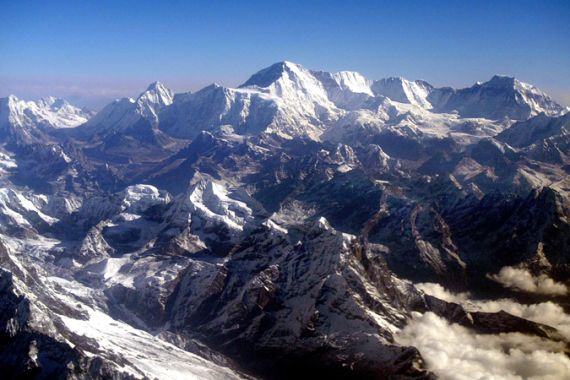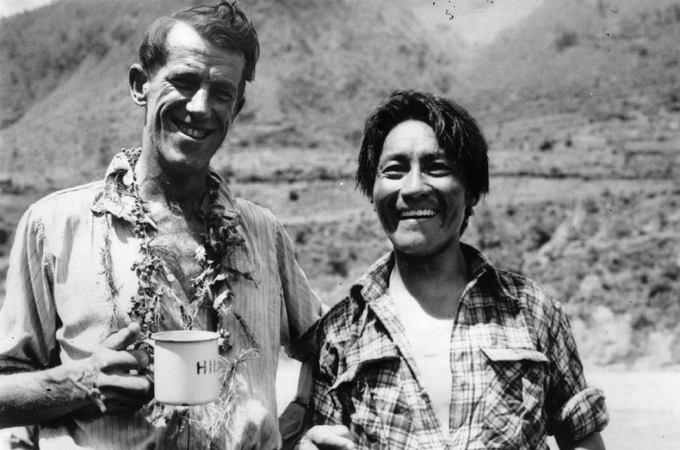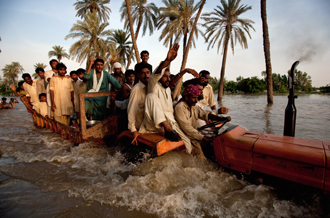What is happening to Everest?
The iconic mountain is changing in appearance.

 |
| Edmund Hillary and Tenzing Norgay after their historic ascent [GALLO/GETTY] |
In 1953 Sir Edmund Hillary and Tenzing Norgay became the first men to climb Mount Everest. Surveying the scene below them they would have seen nothing but snow and ice.
Yet according to the man who has climbed the world’s highest mountain more than anyone else, that scene is now very different.
Keep reading
list of 4 itemsTurtles swimming to extinction in Malaysia as male hatchlings feel heat
Could shipping containers be the answer to Ghana’s housing crisis?
Thousands protest against over-tourism in Spain’s Canary Islands
Apa Sherpa has scaled Everest an amazing 21 times, and having made his first summit as long ago as 1989, is a man whose views carry some weight.
Apa told the AFP News Agency, “…when I first climbed Everest there was a lot of snow and ice, but now most of it has just become bare rock. That, as a result, is causing more rock fall which is a danger to the climbers. Also, climbing is becoming more difficult because when you are on a mountain you can wear crampons, but it’s very dangerous and very slippery to walk on bare rock with crampons.”
The 51-year-old, father of three, was speaking during the Climate Smart Celebrity Trek along the newly opened 1,700 kilometre Nepal Great Himalayan Trail.
The state of Everest and the surrounding mountains and glaciers has been studied for the last three years by the International Centre for Integrated Mountain Development (ICMOD). The Kathmandu-based organization has found that 10 glaciers in the region are all shrinking and at an accelerating rate.
Glaciologists are keen to play down a repeat of an erroneous report in a 2007 Intergovernmental Panel on Climate Change document. This suggested that Himalayan glaciers would disappear as early as 2035. Nevertheless, computer models struggle to keep pace with the rate of recorded glacial retreat.
Concerns about climate change spread beyond the famous peak. The loss of Himalayan glaciers could destabilise mountainsides and have considerable impact on water supplies.
Major Asian rivers, such as the Indus, Ganges and Brahmaputra derive as much as 60 to 80 percent of their flow from summer glacial melt.
 |
| The Indus River relies on snow melt from the Himalayas [GALLO/GETTY] |
Apa’s companion on his trek, top mountaineer Dawa Steven Sherpa, who has made the ascent of Everest on two occasions said, “Right from the beginning [of the trek] we saw the effects of climate change on tea plantations in llam district.
“These areas would not normally get frost and it is destroying their entire crop. These are cash crops that employ thousands of people, even on one farm.
“From what the local people are saying, it’s getting colder in the winter and hotter in the summer and it is the cold they are worried about.”
Perhaps the final word on the matter belongs to the last surviving member of Hillary’s expedition, 79 year old Kanch Sherpa: “I believe the gods reside in the mountain, and now with all the mountains being climbed they have been polluted. I believe God is not happy with all the people climbing in the hundreds.”